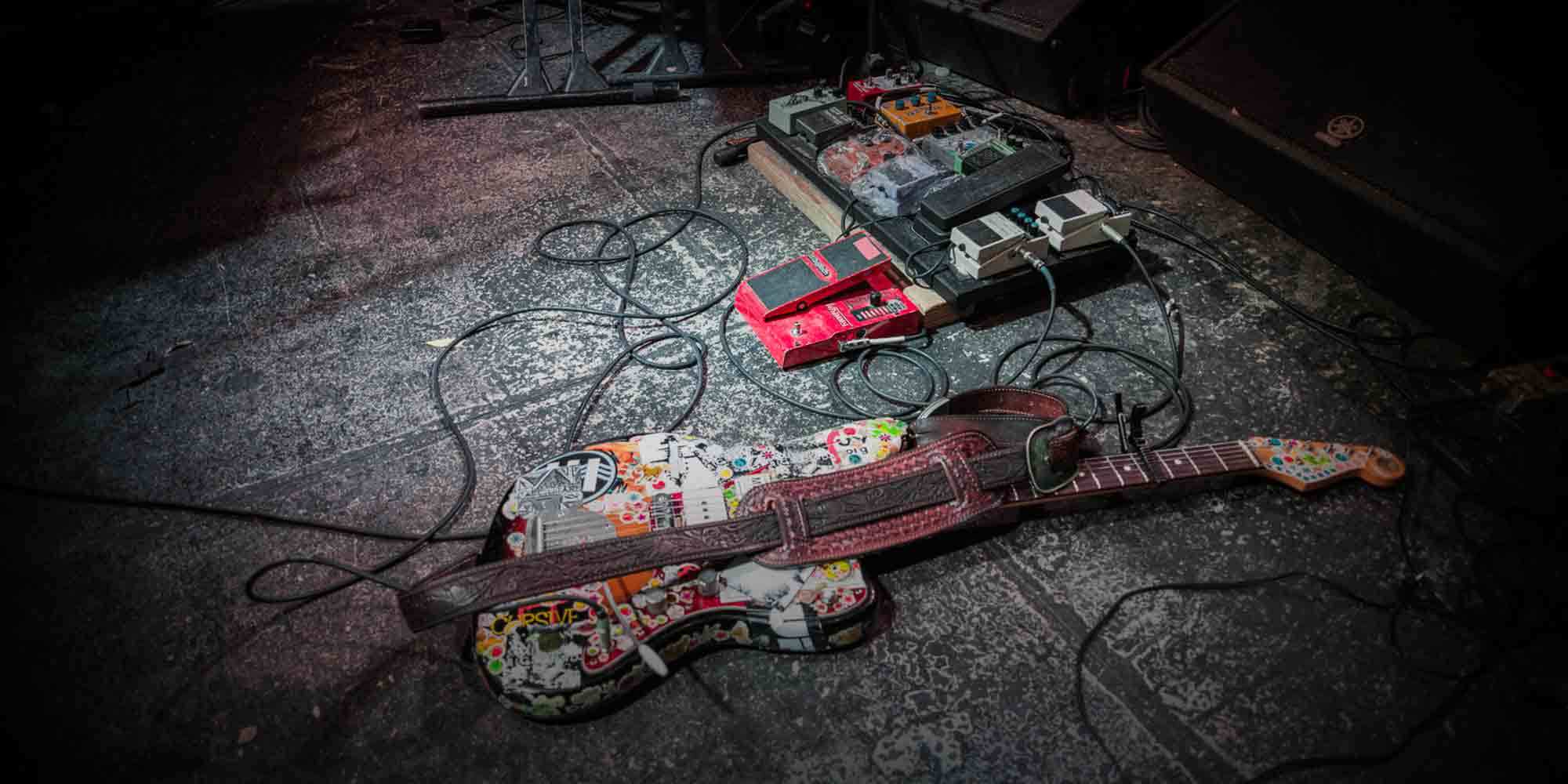
Lose, the new release from Cymbals Eat Guitars, is the sort of album that gives you faith in the power of guitars, synths and pedals. Taking queues from bands like My Bloody Valentine and The Wrens, each track on Lose explores a different sonic territory, from the opening piano lines and Jazzmaster squeals of "Jackson" to the chorus-drenched tones of "Chambers."
And it makes perfect sense. Cymbals Eat Guitars keyboardist Brian Hamilton is also the man behind smallsound/bigsound, a pedal company out of Philly that was recently listed as one of our up-and-coming pedal companies to know about.
We recently caught up with Brian and guitarist/songwriter Joseph D'Agostino during a stint touring with Brand New through the Southeast. Take a look at the band's live setup below and get the story on the album and the gear that went into making it.
Reverb: What's the relationship between smallsound/bigsound and Cymbals Eat Guitars?
Brian Hamilton: Everyone does use smallsound/bigsound pedals, and I've also made a few one-offs for Joe and for myself. Every once and awhile Joe will want a clone of something, so I've done things like that for him too. There was a Red Llama he wanted really badly, so I made him one of those.
R: Which SS/BS pedal do you think best captures what you're trying to accomplish as a pedal maker?
BH: That's a difficult question. The F*CK Overdrive (I don't know if you can print that). I'm very happy with it. It definitely gets the sound I was interested in and I think it's very unique. I don't think there's another pedal out there that does exactly what it does, and that's something I'm proud to have accomplished in carving out a little niche for myself.
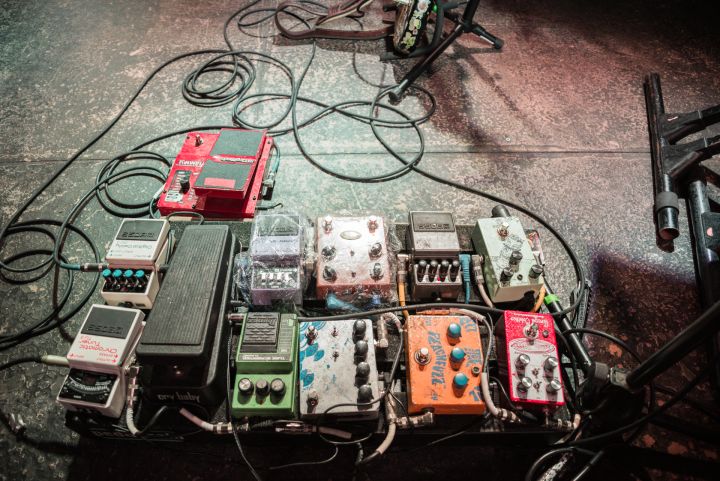
R: Is that the nameless silver pedal on your board, Joe?
JD: Yeah, that's a F*CK Overdrive, but an earlier one with a different layout. I use that for the blown out sound on "Place Names."
R: Joe, I also noticed a Boss Dimension C on your board, which got me excited. Did you just happen upon that or were you specifically searching for one?
JD: I had been looking for one for probably three years. I was trying to get Brian to make me a clone, but he got super busy and it never happened. I'd been trolling Craigslist for one, and I knew before we made our new album that I wanted a lot of chorus on the guitar. We had been out with Hooray For Earth in 2011 for our last record, Lenses Alien, and they became our best friends after that. Noel [Heroux] is also secretly my guitar hero, so I wanted to use a lot of chorus. Normally on a record I'll have one guitar and then double it with slightly different sounds. On "Jackson," for example, the Dimension C is on one channel with a straight up ES-335 through a Marshall on the left channel.
R: I really dig the chorus sound on "Chambers."
JD: That's the first button on the DC. I also use the Mod setting on the RV-5 but turn the tone way down so there's modulation on the reverb, too, which sounds very cool.
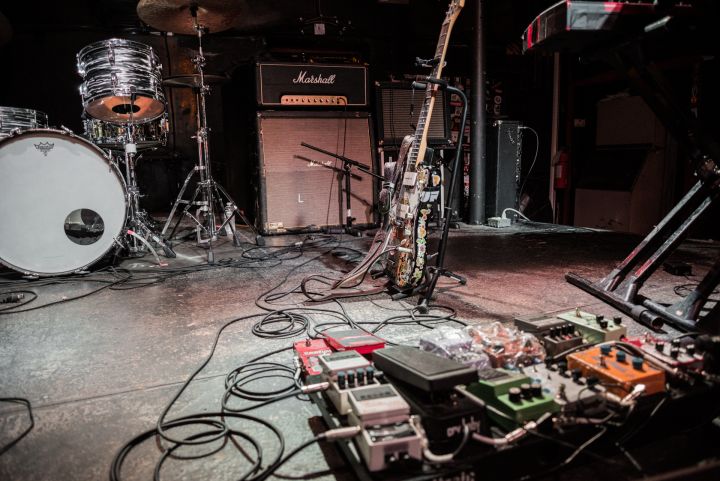
R: Are you the kind of songwriter where you write a song and then think of what sounds will make it sound cool, or do you start with finding cool sounds and build a song around that?
Sometimes gear can inspire songs, but that can be a distraction if you get too caught up in cool sounds as opposed to cool songs.
JD: It can happen either way, really. Usually it starts with the song itself. In the end, the song is king and melody is king. Brian lent me his Digitech Whammy pedal seven months before we did Lose, and I immediately wrote "Laramie," which uses the Whammy pedal in the big shoegaze section in the middle. Once that part happened, I wrote the rest of the song around it. Sometimes gear can inspire songs, but that can be a distraction if you get too caught up in cool sounds as opposed to cool songs.
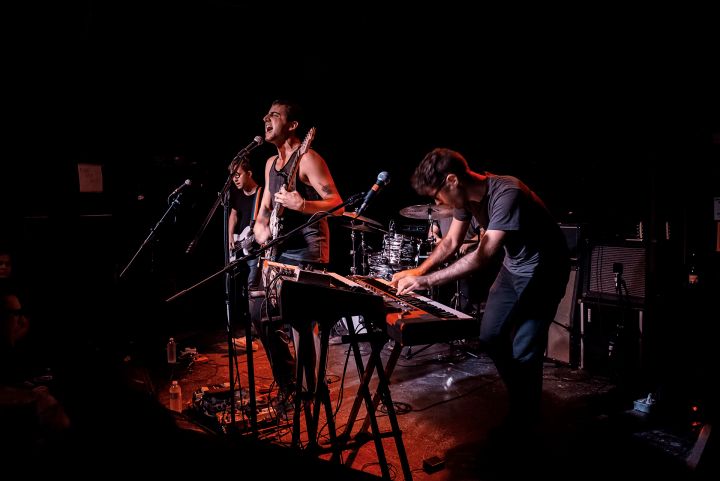
R: Speaking of cool sounds, Brian, I notice you've got a Red Panda Particle delay on your synth. That's been a really hot pedal this year. What do you use it for?
BH: I haven't really had much time to explore, as I just got it on this tour. I've talked to Kurt [of Red Panda] a couple times, and we've talked about ideas and the pedal world. So I wanted to meet him on this tour. And that's really one of the important things about being in an active band is that I get to meet a lot of builders just by virtue of being in different cities. The Particle is an interesting pedal, and I hope to mess around a bit more when I get home. The Random function on it is pretty awesome.
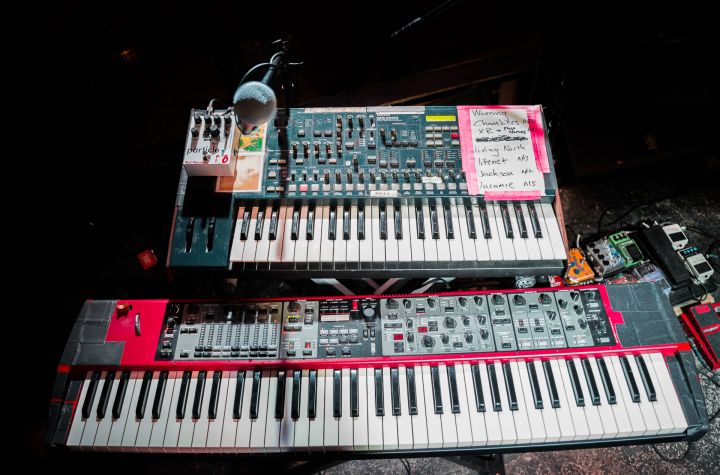
R: I think it's safe to say that pedals are a pretty guitar-dominated field. How has your perspective as a keyboardist influenced your approach to making pedals?
BH: At the very least, I enjoy lots of controls, and that's something that I think is pretty ubiquitous in keyboards. I love modular synths. I love older analog boards with lots of functions. Most guitar pedals are pretty simple, at least historically speaking, with two or three knobs, but I think it's fun to have more control over your sound.
There are things I look for in pedals, like wet and dry control. There are also different frequency responses you have to think about with keyboards, which is why I think some of my pedals translate very well to bass.
R: And that makes sense touring with something like the MS-2000. What about that synth do you like?
BH: I have kind of a love hate relationship with it. I'm not particularly in love with the overall timbre of a lot of the sounds, but I really like the modulation patchbay that it has. It's this digital patchbay that you can get some pretty interesting sounds out of. It's also very versatile, which is something I look for in keyboards.
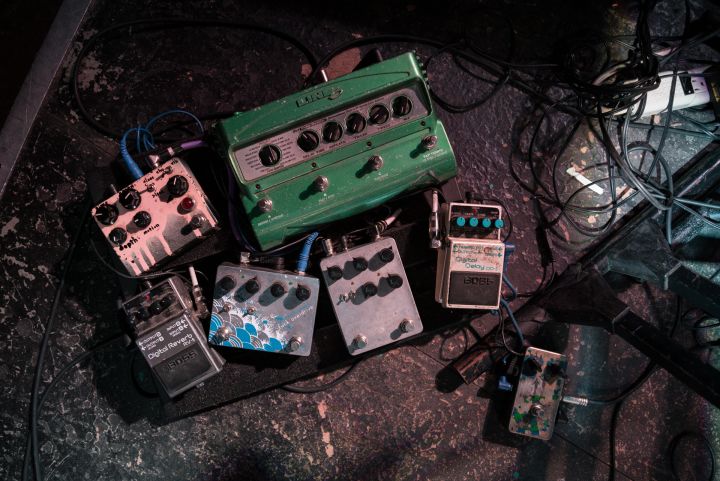
R: I know you also have the Nord, which is more of an electric piano simulation. How are you using the two together live?
BH: The Nord is a Stage Compact, which is good for touring since it's lighter and easier to handle. I generally use the Wurlitzer setting on it, route it through the pedalboard, and then both are amped. On this tour I'm using an Ampeg Super Jet, a newer Ampeg for the Nord and a PA100 with a 1x15 cab for the MS-2000. I don't typically go for keyboard sounds necessarily. My main sound on the Nord pretty much sounds like a guitar. It's the closest thing I can approximate to that.
R: What's your favorite recorded synth sound?
BH: I have a tough time isolating one, but I love all the keyboards on Sigur Ros' Ágætis Byrjun.
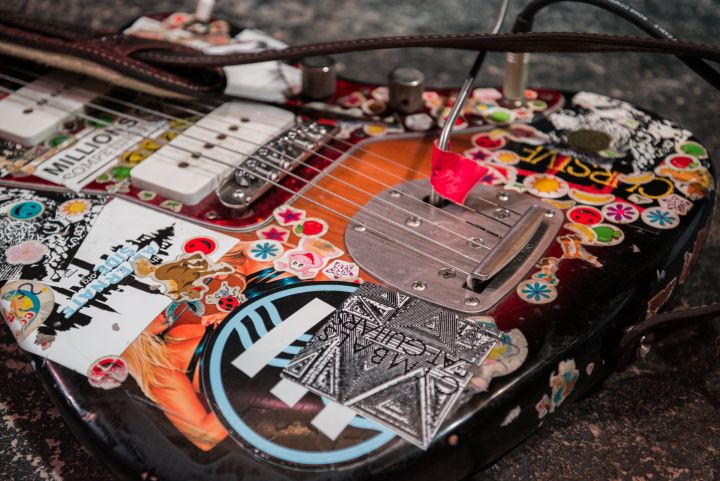
R: Joe, tell me about your Jazzmaster.
JD: I bought it in 2006. It was a new American Jazzmaster. I was going to do a refret, but instead I had them add more of a Les Paul style neck on there, which is wider than a stock Jazzmaster neck would be. It has P-90 style pickups, and I have a Mastery bridge and tremolo system. I'm not very good at repairing my own stuff, but I've been able to keep everything in pretty good shape.
R: How do you feel your gear usage has changed over the years?
JD: It's been a long journey as far as gear. From the very beginning, Brian would try to steer me in the direction of more sensible gear usage. I used to play a 1970 Fender Twin. It's a Silverface with the Blackface circuit. It's gorgeous, but it's loud as god and very unwieldy. I would be using that live and it'd be so loud, that they wouldn't be able to get the drums over it. When I turned on a distortion pedal, it would be wildly, crazy loud. As a result, my singing wasn't great. I had the Twin pointed at the back of my head, in my right ear, and I didn't use earplugs. It was very self-sabotaging.
I think the big change came when I switched to a Marshall amp. It's not so scooped like a Twin and it mushes the levels of all my pedals. Even if its cranked, it's still balanced. I've been using a Canadian JMP for four years now on the road. Guitar tone-wise, everything got a little better and I started learning to play with a little less volume and I think everybody was happier in the band. I started focusing on singing well and taking vocal lessons and doing vocal warm-ups, which all coincided with that.
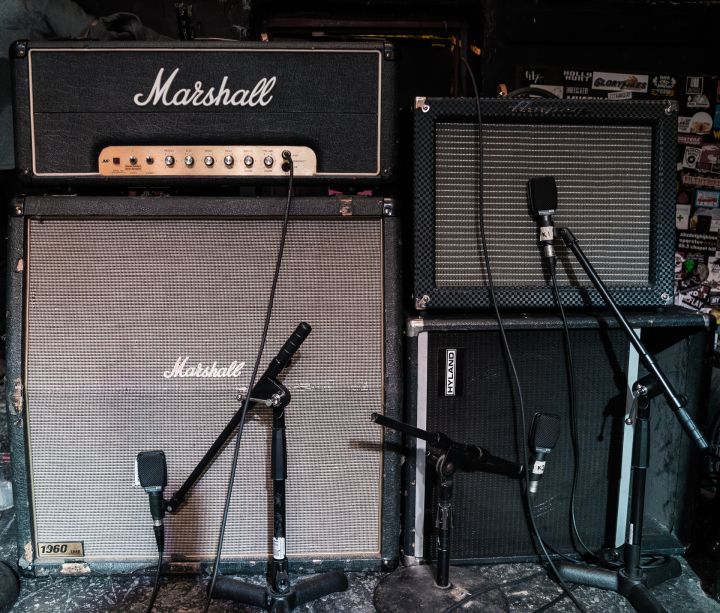
My pedals have been mainly the same except for a few additions. I just got that EarthQuaker Grand Orbiter phaser. I use to use a Red Llama instead of Brian's F*CK overdrive, but outside of that everything's the same.
On this record, everything in the left channel is my vintage '67 ES-335. In the right channel - the more sucked-up, tremolo arm lead stuff - were my Jazzmasters. [Producer] John Agnello pushed it in that direction. On Lenses Alien I wanted to use my same Jazzmaster on every guitar part and every overdub, and he said we should mix it up: different guitars, different textures, and it made for a bigger guitar sound. I want to start using humbucking guitars live, but I'm afraid I would destroy a semi-hollow guitar on the road. I'm not gentle. My ES-335 stays at home in its case in my room.
R: And one last question for you, Joe: what's your all-time favorite recorded guitar tone?
JD: It's on Loveless, the fourth song. I'm terrible with track names. It's the big feedback thing that hangs over the entire song and bends in and out, like [imitates guitar noises].
